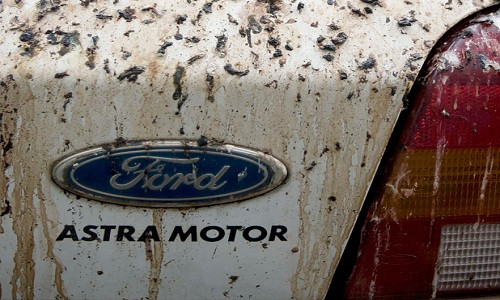The hawk squadron - a new weapon that helps Rome prevent bird droppings
Authorities in Rome, Italy, hope the warlike kite squadron can scare away the starlings, the author of the rain feces smells.
Rome uses kites to chase starlings
The starling birds make Vespa motorbikes and cars covered by sticky gray bird droppings, forcing local residents as well as tourists to rush to find cover, shrink under an umbrella or paper newspaper.
However, hundreds of thousands of migratory stone starlings that regularly drop bombs in Rome over the past few weeks are about to meet worthy opponents. The hawk bird team is responsible for chasing away the flutes from their favorite beans in the city center.

Stool starling birds cover cars.(Photo: Reuters).
The attack did not take place for the first time in recent days when the Harris hawk named Cami, Niky, Gimmy, Angela and Giorgio, were released by a family specializing in raising birds."They were trained to scare the starlings but didn't kill the birds," The Telegraph said on November 23, according to Anna Vincenzoni, a city council member.
City officials announced the test was successful, but it immediately encountered opposition from environmentalists.
Opponents insist that capturing birds of prey is cruel and stresses that this measure will fail because the flute knows how to live together and evade predatory birds after tens of thousands of years of evolution.
Rock clusters gather into giant flocks of birds, frequently changing the direction of swirling shapes that confuse birds of prey and mimic the winding movement of liquid lava flow.
The Italian Bird Protection Federation also criticized the use of hawks. According to them, the sky of Rome has natural predators such as large birds but they still cannot threaten dense starlings. The organization stressed the use of Harris hawks, native birds in the Americas, will not yield significant results. The three-day pilot project that can continue over the next few weeks seems to have a very limited impact.

The stone flute follows each large black herd to avoid predatory birds.(Photo: AFP).
Authorities have been working hard for years to find an effective solution against the starling flock that often landed in the autumn city every year. Birds migrate from Scandinavia and Eastern Europe to find mild temperatures. During the day, they feed in the countryside, then park in Rome at dusk due to the attraction of the city lights and warm temperatures.
In the past, city officials used sound speakers to simulate starling screams of starlings to scare them, but the measure was too costly and achieved little success.
On weekends, the roads running along the banks of the Tiber river must partially block off to clean up. Roads are too slippery due to starlings and heavy rains, which can be dangerous for vehicles and pedestrians.
Starlings eat olive fruits in the bushes outside the city, so the droppings are particularly rich in oil and very slippery . People in Rome often have to carry umbrellas to avoid bird droppings falling to their heads.
- Why is bird waste white?
- Locate penguins through traces of bird droppings observed from satellites
- Amazing when people have eyes like eagle
- Spotted spiders transform into bird droppings
- The truth falls back on the culprit who burned into Rome
- Tarantula Hawk has a burning sting like 'sitting on an electric chair'.
- View 'flying car' Kitty Hawk Flyer express 'class'
- There has been a vaccine to prevent bird flu
- Mysterious labyrinth under Rome
- NASA's Global Hawk drone
- Vietnam urgently responds to H7N9 flu from China
- City birds are afraid of obesity
 Animal 'suffering' after hibernation
Animal 'suffering' after hibernation Why do goats climb well?
Why do goats climb well? Scientists were surprised to see chimpanzees eating turtles
Scientists were surprised to see chimpanzees eating turtles Giant catfish died deadly due to drought in Thailand
Giant catfish died deadly due to drought in Thailand